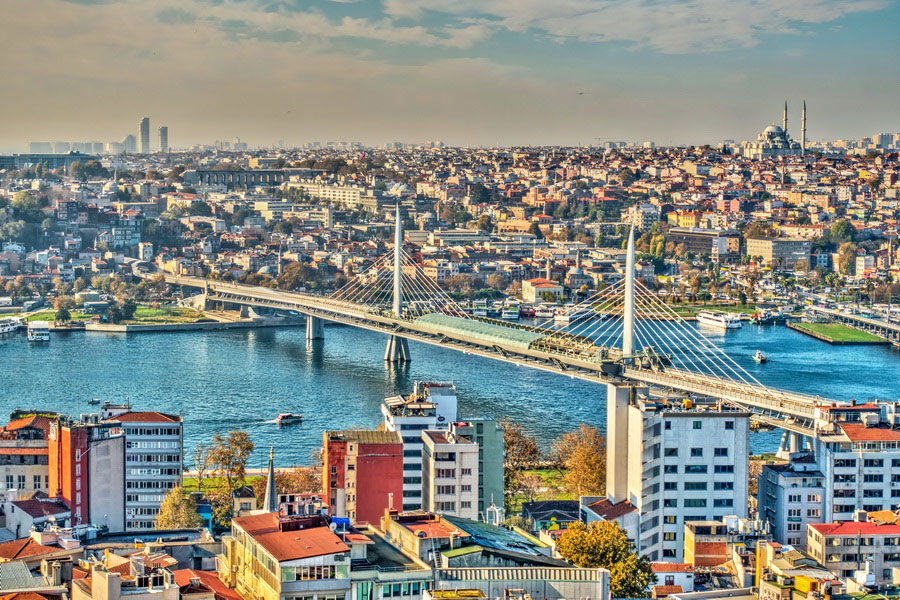The Thrace and Marmara Region is an extraordinary geographical and cultural area of Turkey (Türkiye) on the intersection of Asia and Europe, serving as both a physical and metaphorical bridge between East and West. Centred around the Sea of Marmara, this region connects the Aegean Sea to the west and the Black Sea to the northeast via the strategic Çanakkale and Bosphorus straits. From the Byzantines to the Ottomans, its location has made it a historical epicentre for empires, trade, and migration.
Celebrated for its industrial output, agricultural production, and rich biodiversity, the Thrace and Marmara Region also includes important conservation areas such as Kuşcenneti National Park (Kuşcenneti Millî Parkı). Its urban areas are in sharp contrast with its rural landscapes, as you can see this difference in the cat-filled streets and narrow hallways of large cities compared to the quiet villages shaped by nearby Balkan traditions.
The largest city, Istanbul, sits on the fence of two continents and was once the capital of both the Byzantine and Ottoman Empires. Beyond the metropolis, East Thrace (Doğu Trakya) extends into Europe, sharing borders with Bulgaria and Greece, while the Asian side integrates into the Central Anatolia Region. The area includes the former Ottoman capital of Bursa, known for its forests and Uludağ Mountain, and Edirne, famed for its Ottoman heritage and sunflower fields.
Along with the other regions of Turkey, the Thrace and Marmara Region is a study in contrasts. Industrial zones and sprawling vineyards coexist with ecological treasures like Kuşcenneti (Bird Paradise) and the İğneada Floodplain Forest National Park. The Thrace and Marmara Region climate varies from Mediterranean coasts to Black Sea-influenced highlands, supporting agriculture, tourism, and trade. Major Marmara Region attractions range from the Gulf of Saros’ diving spots to Bursa’s ski resorts, reflecting the region’s resourcefulness.
Strategically vital for centuries, its waterways remain crucial for global trade. Mosques vibrate with the adhan (ezan) while energetic bazaars and contemporary art scenes fuss around them.
Thrace and Marmara Region Tours
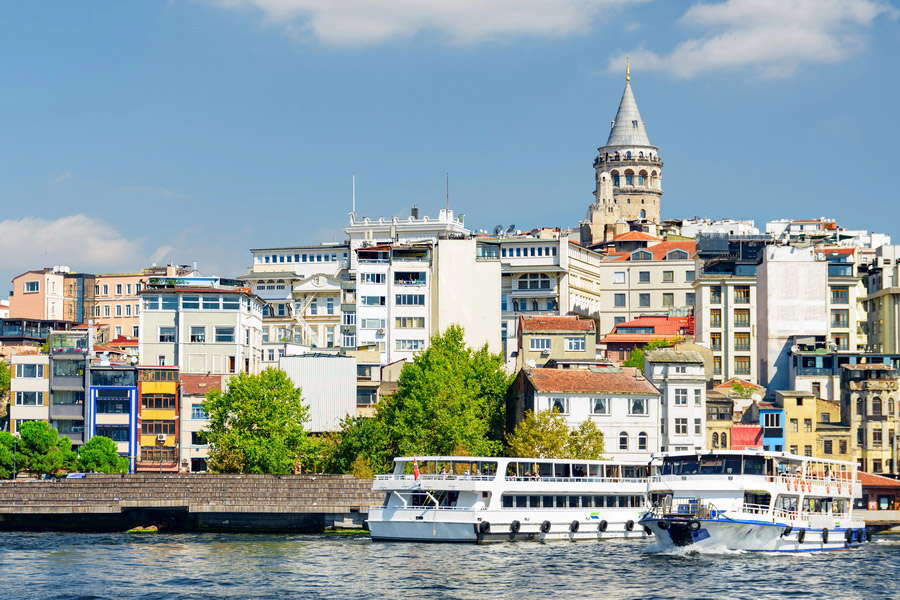
Travelling through the Thrace and Marmara Region, Turkey promises an extraordinary combination of energetic cities, historic sites, and magnificent natural beauty. Istanbul enchants tourists with its famous Bosphorus cruises, where magnificent Ottoman palaces and historic waterfront mansions reflect in the shimmering waters. Crisp simit, smoky grilled fish sandwiches, and tart stuffed mussels are just a few of the mouthwatering flavours found in the city's crowded streets. Meanwhile, relaxing Turkish breakfasts with panoramic views of the strait establish the ideal morning ritual during tours in this region of Turkey.
Other than Istanbul, a broad spectrum of things to do in the Region can be found throughout the area. Bursa introduces snow-capped Uludağ Mountain, which can be reached with a thrilling cable car ride, and the timeless charm of Cumalıkızık Village, where cobbled streets and wooden houses move visitors back centuries. In another imperial capital, Edirne, holidaymakers will experience the adrenaline-fuelled Kırkpınar Oil Wrestling Festival, taking place usually in late June, and the exquisite taste of crispy fried liver, a local speciality.
The Kaz Mountain (Mount Ida) is a paradise for nature lovers, with lush vegetation and valleys mentioned in ancient myths dotted with thermal springs of Yalova. Since ancient times, the vineyards of Tekirdağ along the Sea of Marmara have produced some of Turkey's best wines, and the unspoiled Marmara beaches of Kerpe guarantee peaceful Thrace and Marmara beach getaways.
The Thrace and Marmara Region tours bring together Ottoman landmarks, Aegean-style nature, and Thracian traditions. Çanakkale grants visits to Troy and Gallipoli, while Mount Ida is popular for myth-rich nature walks. Marmara and Avşa islands bring relaxed Marmara beaches and quiet coastal stays. Guided tours in the Marmara Region during your holiday usually combine culture, nature, and local cuisine, and all are within a few hours’ drive from Istanbul.
Best Time to Visit the Thrace and Marmara Region
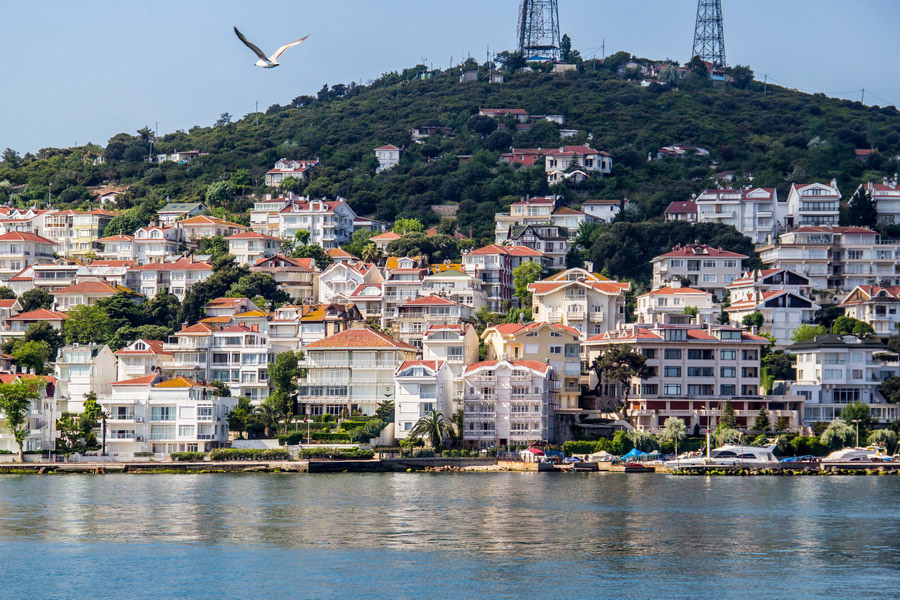
The best time to visit the Marmara and Thrace Region is spring (April to June) and autumn (September to October), as these are the best seasons to explore the Thrace and Marmara Region. During these months, the weather is generally mild and comfortable, with daytime temperatures ranging from 16°C to 24°C (60.8°F to 75.2°F). and less rainfall compared to the wetter winter period, and there are more things to do in the Thrace and Marmara regions. These are the best months to see Marmara destinations such as Ottoman mosques, UNESCO sites, and old bazaars that can be explored without the discomfort of heat or crowds. The region’s nature parks, such as Belgrad Forest and the rural areas of East Thrace, are also more accessible for hiking and outdoor activities. September is also the best time for seasonal festivals in the Marmara Region and local harvests in rural parts of East Thrace.
The best time to visit the Marmara and Thrace Region in summer is from July to August, when the focus of Marmara tourism shifts to coastal towns such as Silivri, Mudanya, and the Princes’ Islands. Locals and domestic tourists gather at these Marmara beaches for swimming, sunbathing, and water sports. Kilyos (Kumköy), just an hour's drive away from Istanbul, draws large weekend crowds to its long, sandy Marmara beaches. The islands of Büyükada and Heybeliada attract visitors with their old mansions, pine forests, and car-free streets.
The best time to visit the Marmara Region in winter is from November to February, which introduces a different set of Marmara attractions. Uludağ, near Bursa, is the top ski destination in Western Turkey with modern facilities and frequent snow. Istanbul becomes quieter and more affordable, with Thrace and Marmara Region hotel rates dropping significantly.
Places to visit in the Marmara Region in winter include historic hammams in Bursa and scenic ferry rides on the Bosphorus. Though the weather is colder, with temperatures ranging between 7°C (44.6°F) and 15°C (59°F) and increased rainfall. Winter delivers a more peaceful and truly unique way to experience the cities and attractions of the Thrace and Marmara Region.
Uncover the Charms of the 11 Provinces of the Marmara and Thrace Region
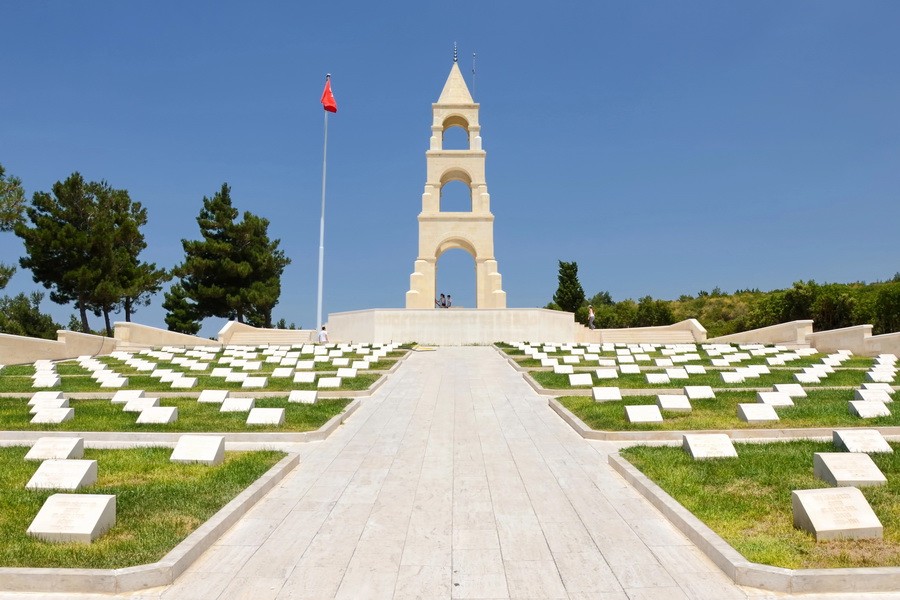
This region at the intersection of two continents includes 11 provinces. The Thrace and Marmara tourism is mainly developed in Istanbul. Thrace and Marmara's history here is particularly rich, as it stands out with its long imperial eras from Byzantine times to Constantinople and the Ottoman Empire. Landmarks such as the Hagia Sophia, Topkapı Palace, and the Blue Mosque make it one of the top destinations in Marmara, Turkey.
Once the capital of the Ottoman Empire, Edirne is known for its iconic Selimiye Mosque and remains a key stop for cultural tourism in the Marmara and Thrace Region. Bursa, declared the Cultural Capital of the Turkic World in 2022, is famous for Ottoman architecture, thermal springs, and winter sports, with more things to do in Thrace and Marmara.
On the crossroads in northwest Turkey, Bilecik is an emerging star for ecotourism and agrotourism in the Marmara and Thrace Region. Kocaeli positions the Kartepe ski resort, Sapanca Lake views, the Marmara beaches of Kandıra and Kefken, the Osman Hamdi Bey Museum, and the Kocaeli Archaeology Museum as its Marmara tourism destinations.
Along the Sea of Marmara, Tekirdağ is well-suited for sea sports and gastronomy tourism, with ancient settlements and Thrace and Marmara wine culture adding depth. Nearby, Kırklareli charms nature lovers with Dupnisa Cave, İğneada Floodplain Forests National Park, and the cultural site of the Vize Small Hagia Sophia Mosque.
Positioned between the Marmara and Aegean seas, Balıkesir includes Ayvalık, Cunda Island, and the Kaz Mountain. Çanakkale holds deep historical significance as the site of ancient Troy and World War I’s Gallipoli campaign. Yalova combines thermal tourism with Marmara attractions such as Sudüşen Waterfalls, Atatürk Mansion, and Karaca Arboretum. With Sapanca Lake, Acarlar Floodplain Forest, and Taraklı, a preserved Ottoman town on the Silk Road and a member of the Cittaslow network, Sakarya celebrates ecotourism.
Explore the History of the Thrace and Marmara Region
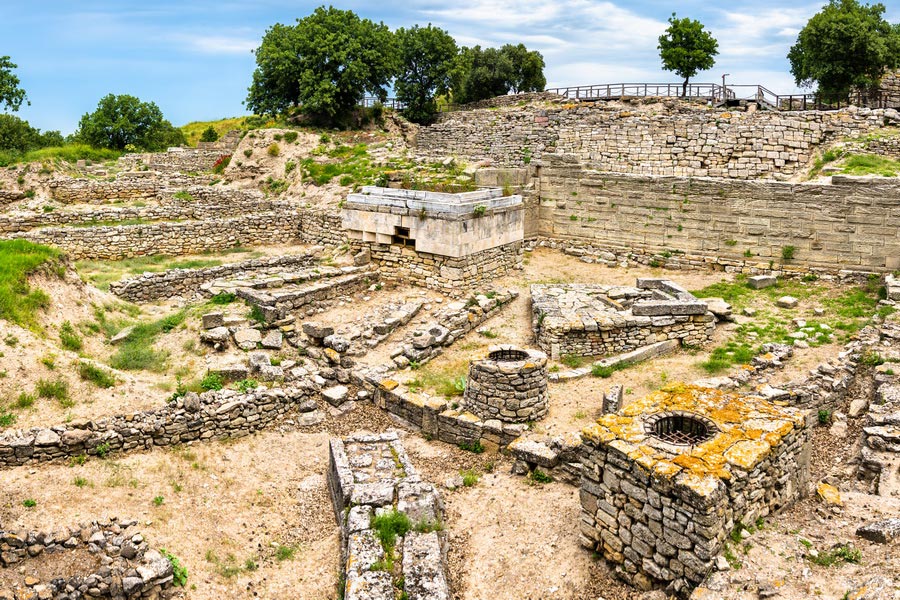
The history of the Thrace and Marmara Region is a complex aspect of Turkey, where empires were built. Its past goes back to early Bronze Age settlements around the Sea of Marmara. It later became the political, religious, and economic centre of the Roman, Byzantine, and Ottoman empires. The region played an important role in shaping Christianity, with the First and Seventh Ecumenical Councils of Nicaea taking place in İznik. Other historical places to visit in the Marmara Region are Alexandria Troas, Assos, and Troy in Çanakkale, along with Prusa (Bursa), which also show the ancient history of this region. From 330 AD, Constantinople was the capital of the Roman and later Byzantine Empire. In 1453, the Ottomans captured the city, and it became the capital of an empire that stretched across three continents. Edirne, another top destination in Marmara, Turkey, was the Ottoman capital before Istanbul and served as a military and academic heart. Bursa, the empire’s first major capital, played a key role in early Ottoman statecraft, silk production, and architecture.
Gallipoli in Thrace became globally recognised during World War I due to the 1915 campaign, while the Turkish War of Independence reshaped modern borders of the region. With preserved sites and monuments, which are available with the MuseumPass Turkey, showing centuries of change, Istanbul, Bursa, Edirne, Kocaeli, and Çanakkale are now among the most popular travel destinations for a holiday in the Marmara region.
Plan Your Dream Holidays in the Thrace and Marmara Region
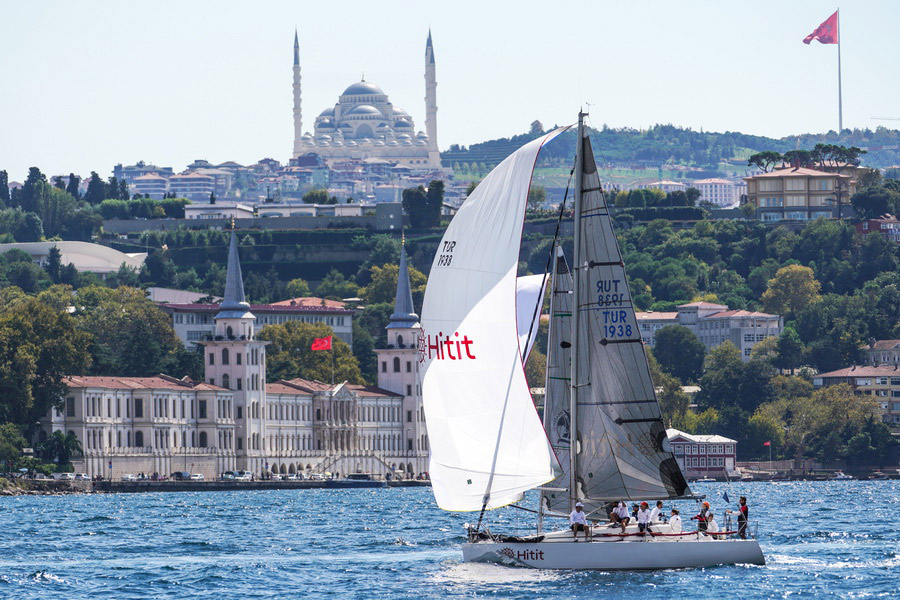
Serving as a gateway between Europe and Asia, Istanbul stands out as one of the top destinations in Turkey’s Marmara Region. This vibrant metropolis holds immense value due to its rich natural resources, historical significance, unique cultural blend, and vital strategic maritime routes, making it a must-visit for all types of tourists.
Historical Splendours and Holy Sites
Alexandria Troas was once a port city established during the Hellenistic period, featuring remains of theatres, baths, aqueducts, and a stadium, and represents one of the best places to visit in the Marmara Region, Turkey. The nearby ferry port connects to Tenedos (Bozcaada). Assos, located on the hills of Behramkale overlooking Lesbos, is renowned for Aristotle’s short-lived philosophical Academy. Parion, located in Kemer village, gets its name from Paris of Troy and features Roman-era buildings like an odeon and baths, while the ruins of Troy include walls, temples, and palaces and are displayed in the newly built Troy Museum.
Chalcedon, now known as Kadıköy, is another ancient city on Istanbul’s Asian side, currently under excavation near Haydarpaşa Station. According to legend, early Greek settlers dubbed it ‘the city of the blind’ for allegedly overlooking the superior strategic location of Byzantium (across the Bosphorus on the European side). Today, artefacts and ruins uncovered around Haydarpaşa reveal its rich past as a key settlement predating Constantinople.
Wellness and Health Tourism in the Marmara Region
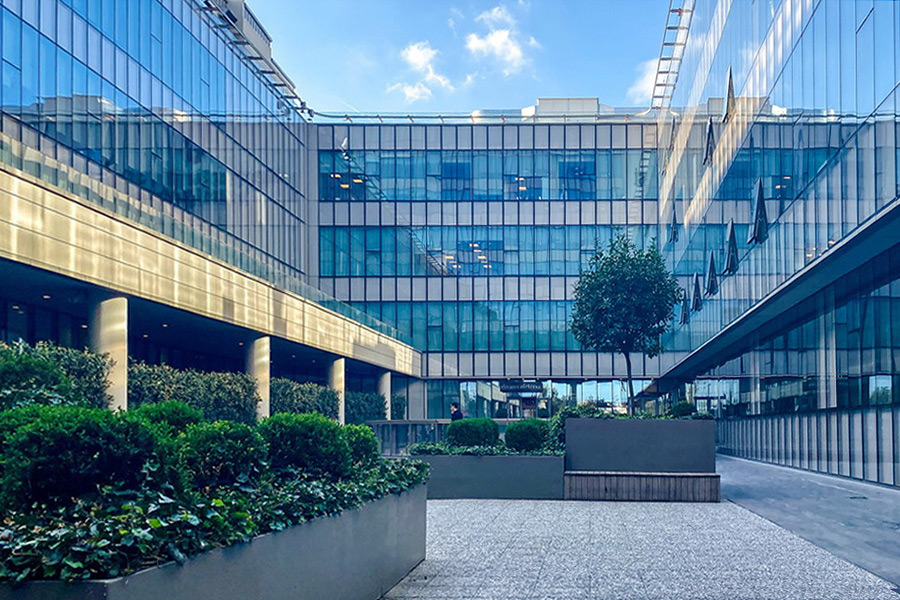
The Thrace and Marmara Region, particularly Istanbul, are home to JCI-accredited hospitals such as Acıbadem Maslak Hospital, Memorial Hospitals, and Koç University Hospital, which provide excellent, reasonably priced care. Dental care, cosmetic surgery, and hair transplants are common procedures. In comparison to Western nations, patients enjoy the advantages of state-of-the-art technology, reduced wait times, and substantial cost savings.
Yachting and Cruising Through the Marmara Sea
Almost mythological history and stunning scenery are displayed when cruising in the Marmara Sea. The Dardanelles Strait is steeped in ancient mythology. With palaces and fortresses lining its shores, the Bosphorus connects Europe to Asia.
Çanakkale serves as a port of entry, with easy access to Troy and World War I battlefields. Ports like Karabiga, Kemer, and Erdek grant resting spots along the southern coast. Bandırma and Mudanya are industrial stops, and they are also practical for stocking up. As boats head east, Setur Yalova Marina and other facilities near Istanbul provide different services.
Istanbul itself features Marinturk, Ataköy, and West Istanbul Marina. The Bosphorus Strait connects to the Black Sea. Yachting is an essential part of a holiday in the Marmara and Thrace Region, offering a blend of coastal history, modern comforts, and excellent maritime facilities.
Marvel at Nature's Wonders and Delight in Outdoor Activities
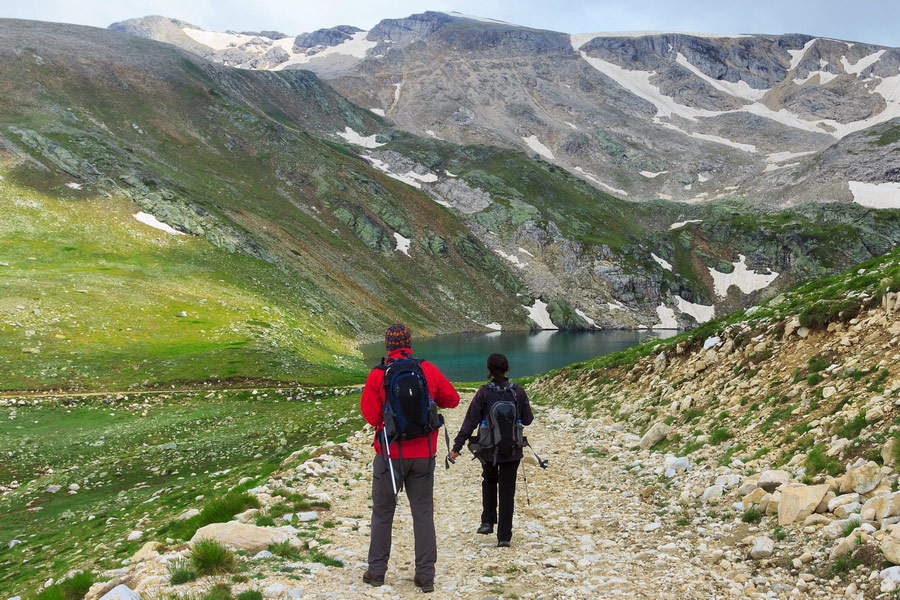
From forested mountains and glacial lakes to scenic plateaus and coastal estuaries, a Thrace and Marmara Region holiday is indulging in various outdoor activities and nature-based tourism. One of the top spots in Marmara, Uludağ National Park, is a major centre for skiing, trekking, and climbing. Uludağ Mountain, the highest peak in the region, has plenty of winter sports facilities. In spring and summer, it attracts many visitors for hiking, camping, and enjoying panoramic nature walks. Ayvaini Cave in the same province presents a 5.5-kilometre (3.42-mile) long trail system that crosses underground lakes and chambers.
Kazdağı National Park in Balıkesir, stationed in a transitional Thrace and Marmara Region climate zone, is home to nearly 1,000 plant species and deep forest ecosystems and designated trails for hiking and camping. Also in Balıkesir, Kuşcenneti National Park is on the bird migration route and features Lake Manyas (Kuş Gölü), which is recognised as a Ramsar wetland. This area incorporates 266 bird species and provides guided birdwatching tours.
With snow cover in winter and green routes in summer, Kartepe is another major site for skiing, hiking, and trekking. Ballıkayalar and Sapanca have marked trails for short- and long-distance hikes for the Marmara Region holiday. The Samanlı Mountains, stretching across Yalova and Bursa, provide a 30-kilometre (18.64-mile) cycling route and seasonal hiking opportunities.
Rafting in Melen Creek, located in İzmit, with organised weekend tours and facilities, is best for Marmara travel. Horseback riding, walking, and mountain biking are also supported by certified clubs in Istanbul and its surroundings. In Çanakkale, Saros Bay on the Gallipoli Peninsula offers scuba diving opportunities among World War I shipwrecks, making it a prominent destination for nature-based tourism in Marmara, Turkey.
Green Escapes: Ecoregions and Sustainable Destinations
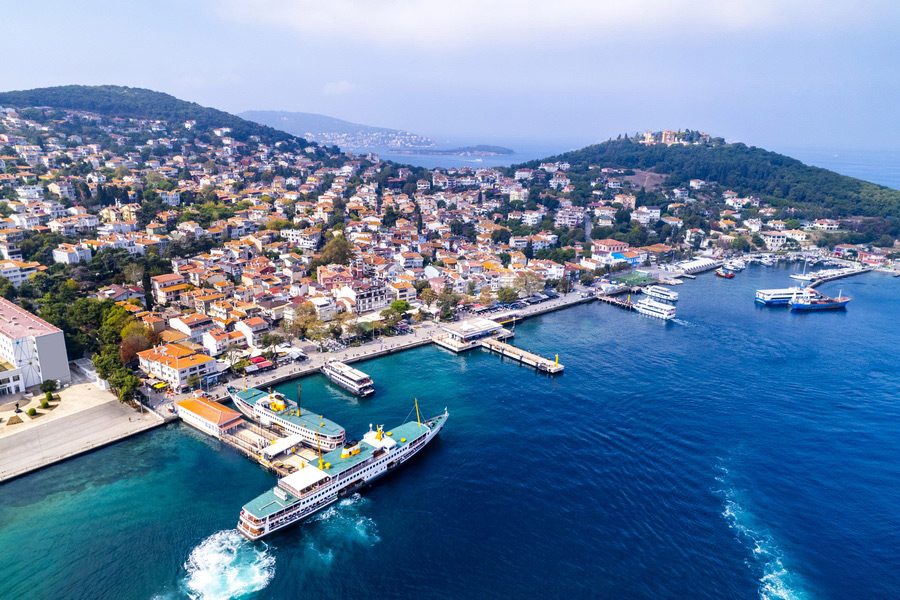
Ecoregions
In the Thrace and Marmara Region, Mediterranean and temperate ecological systems come together. The southwestern part of the region is dominated by Anatolian conifer and deciduous mixed forests.
In the northern parts, Balkan mixed forests stretch across valleys and mountain slopes, reaching into southeastern Europe. These forests flourish in a humid subtropical to warm continental climate. They mainly consist of deciduous oaks, European beech, and conifers such as black pine and silver fir.
This area forms a transition zone between Mediterranean scrub and temperate woodland. The entire region is part of the larger Palearctic realm, which extends from Europe to East Asia.
Cittaslow
The Thrace and Marmara Region of Turkey has several towns recognised by the international Cittaslow movement, which focuses on sustainable urban development and improving quality of life. Vize, stationed in Kırklareli, lies between the Black Sea coast and the Strandzha Mountains and is home to the historic Little Hagia Sophia Church. İznik, in Bursa, previously known as Nicaea, is noted for its UNESCO-listed heritage, religious importance, and famous handmade tiles. Şarköy, in Tekirdağ Province, holds Blue Flag beaches, a 60-kilometre (37.28-mile) coastline, ancient winemaking traditions, and adventure sports like surfing and paragliding in nearby Uçmakdere. These towns encourage slow living and environmental care, making them important sustainable destinations for tourism in the Thrace and Marmara Regions.
Marmara Islands
The Marmara Islands, found in the Sea of Marmara, include Marmara Island, Avşa, Paşalimani, and Ekinlik. Marmara Island is the largest in the area and is famous for its ancient marble quarries and Roman-Byzantine artefacts. Avşa Island draws summer visitors with its Marmara beaches, vineyards, and the Byzantine-era Virgin Mary Monastery (Meryem Ana Manastırı). Paşalimani is a peaceful, rural island known for its natural shore and small villages, while Ekinlik is the least populated, keeping its traditional way of life. Near Istanbul, the Princes' Islands, like Büyükada and Heybeliada, are also popular spots in Marmara. They are known for their historical mansions, churches, and diverse heritage. Together, these islands showcase the varied character of Thrace and the Marmara Region of Turkey.
Reconnect with Nature by Experiencing Farm Stays and Agrotourism
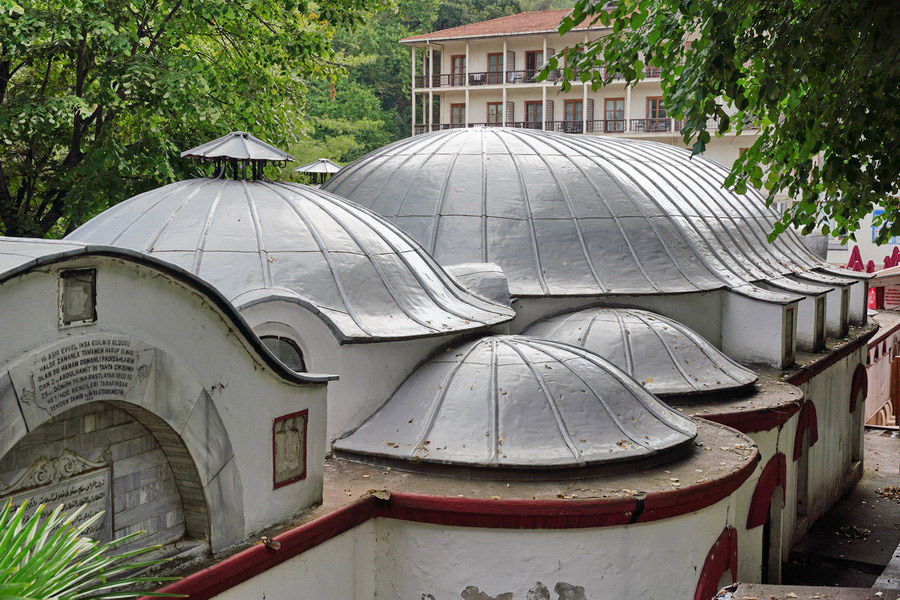
By merging local culture, organic farming, and rural customs, travels in Turkey's Thrace and Marmara Region offer a variety of agrotourism experiences. In Istanbul, Şile’s organic farms and chestnut honey are vital components of Marmara culture. Kırklareli, known for its vineyards and İğneada Longoz forests, includes farm-to-table dining and wine tours, enriching your holiday.
Bursa’s Cumalıkızık, a UNESCO-listed Ottoman village, allows visitors to pick peaches and chestnuts while enjoying traditional village breakfasts. Balıkesir’s Ayvalık district and Küçükköy locality focus on olive oil production, with harvest experiences from October to November. The Adatepe Olive Oil Museum (Adatepe Zeytinyağı Müzesi) showcases insights about regional production techniques.
Çanakkale’s Bozcaada and Gökçeada islands are prominent for organic vineyards and wine festivals in October. Yalova’s Termal district combines thermal springs with kiwi and fig farming. Sakarya’s Taraklı district promotes the culture of slow food in this region, featuring homemade jams and rural guesthouses.
Tekirdağ’s Uçmakdere and Şarköy localities are top destinations in Marmara for wine and olive oil tourism, with seaside farm stays available. These locations have direct engagement with agricultural practices, from grape harvesting to cheesemaking.
Agrotourism in the Thrace and Marmara Region of Turkey supports sustainable travel while preserving rural heritage. Visitors can explore these destinations year-round, with spring and autumn being ideal for harvest activities.
Embrace Sustainable Shopping: Enjoy Eco-Friendly Finds
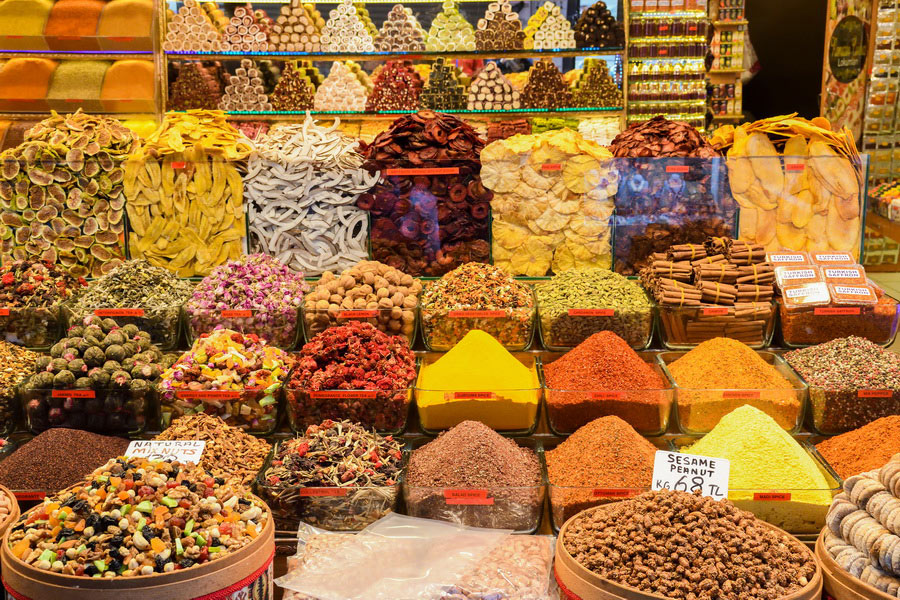
Travel in Thrace and the Marmara Region means a growing network of sustainable shopping spots. These places to visit in the Marmara Region attract people who care about ethical consumption, traditional crafts, and eco-friendly finds. In Istanbul, vintage and second-hand shops are an essential part of this scene. By Retro in Beyoğlu is notable for its carefully curated fashion archive. Eco-friendly stores such as Atölye K. and Mae Zae carry fashionable goods manufactured using sustainable methods.
In the historic capital of Istanbul, the Grand Bazaar (Kapalıçarşı) and Spice Bazaar (Mısır Çarşısı) in Eminönü continue to be major gathering places, but Sultanahmet's Arasta Bazaar, filled with regionally made jewellery, textiles, and ceramics, supplies more carefully chosen handmade experiences. Away from the usual tourist paths, Beylerbeyi Market serves as an authentic combination of handicrafts and fresh produce. Ethicalist and Dünya Doktorlar are fair trade options providing clothing and accessories sourced ethically.
Bursa, amongst the top destinations in Marmara, preserves its Ottoman heritage through a network of historic hans (caravanserais) and bazaars. Koza Han is still active in the silk trade and sells fine silk products in its atmospheric courtyard. Nearby, Tuz Han and Fidan Han continue to support local commerce through clothing and household goods. Uzun Çarşı and the Covered Bazaar (Kapalıçarşı) sell jewellery, textiles, and mirrored antiques, while the Salt Bazaar (Tuz Pazarı) specialises in affordable apparel and homeware.
In Kocaeli, the large Tuesday and Saturday farmers’ markets serve as vital grocery centres. In Balıkesir's Ayvalık, Thursday markets bring seasonal Aegean vegetables and fruits. In Yalova, Pazar Park transforms on different days and is loaded with everything from dairy and vegetables to handicrafts made by local women. The Yalova Çarşı Closed Market (Yalova Kapalı Çarşı) and main shopping streets such as Atatürk Boulevard and Fevzi Çakmak Street trade textiles, souvenirs, and household essentials.
Edirne, one of the must-see attractions in Turkey's Thrace and Marmara region, celebrates shopping steeped in tradition. Bedesten and Ali Pasha Bazaars (Ali Paşa Çarşısı) display alluring embroidered fabrics, handmade lace, and copperware. Spices, dried fruits, and olive oil soaps make popular souvenirs.
The historic Aynalı Bazaar (Aynalı Çarşı) in Çanakkale and central markets in Kırklareli, Lüleburgaz, and Vize provide additional chances to shop sustainably while connecting with the region’s heritage.
A Taste of Tradition: Savour Regional Authentic Food of the Thrace and Marmara Region
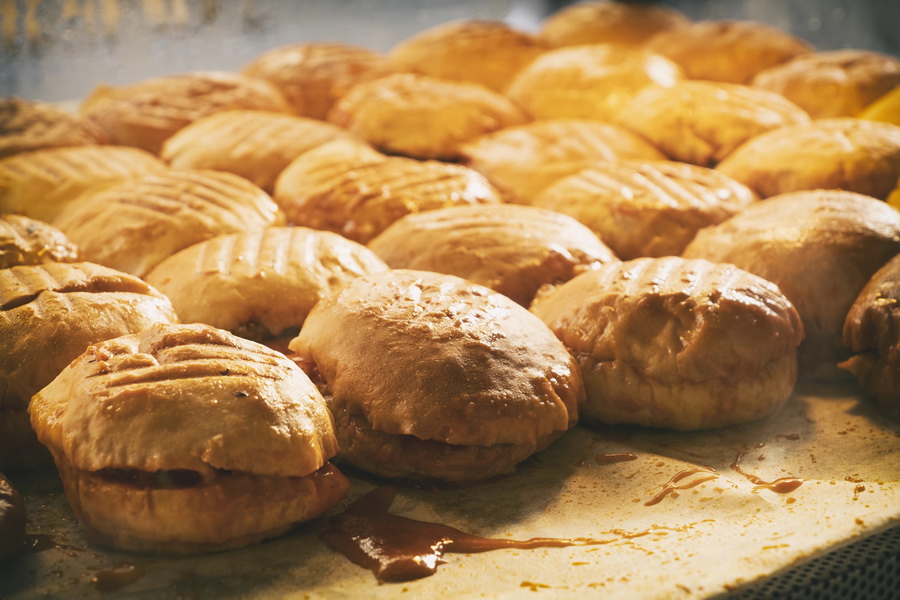
With an assortment of regional specialities, the culture of the street food in the Thrace and Marmara Region, along with cuisines associated with agriculture, livestock, and coastal life, illustrate the convergence of Europe and Asia in Thrace and Marmara cuisine.
In Istanbul, the heart of Marmara, Turkey, the food scene includes both modern gastronomy and everyday fast eats, with signature street foods from the region such as simit, wet burgers (Islak Hamburger), stuffed mussels (Midye Dolma), tantuni, kumpir, tavuk pilav, and balık ekmek sold near the Bosphorus. Wet burgers are best found around Taksim, while Balık Ekmek is popular near Eminönü piers. Classic dishes like hünkar beğendi (lamb stew over aubergine purée) and paçanga böreği (fried pastry with pastırma and cheese) are served in traditional Istanbul lokantas such as Pandeli and Karaköy Lokantası. Lokum, a historical sweet, can be tasted in iconic sweet shops like Hafız Mustafa and Hacı Bekir.
Bursa is a top destination for food in the Thrace and Marmara Region because of its renowned İskender Kebab, which was invented there and became an integral part of the culinary tradition in this region of Turkey. Mihaliç cheese, made locally from cow’s milk, and kestaneli baklava, a sweet made with candied chestnuts, are unique to the city. The Kemalpaşa dessert from Mustafakemalpaşa in Bursa is made with local cheese and soaked in syrup.
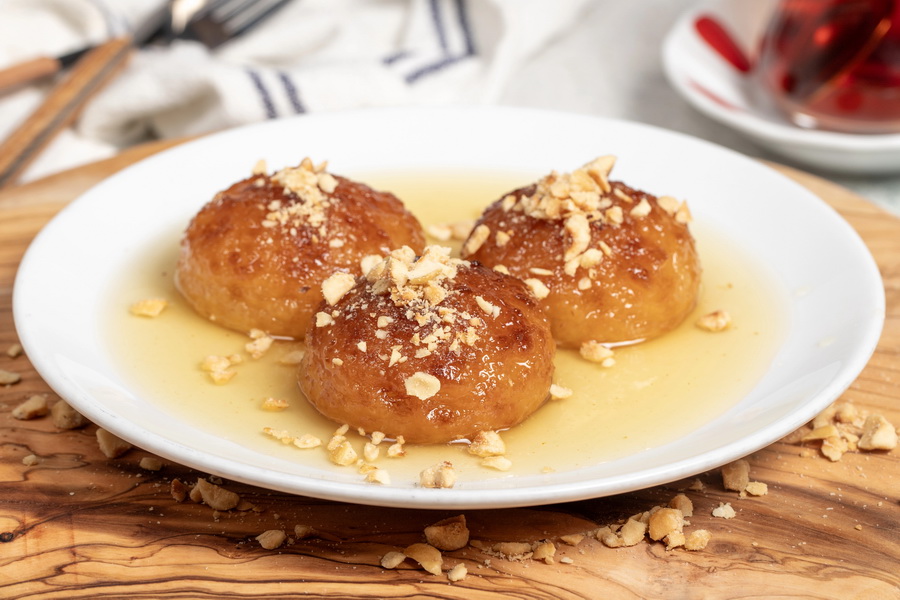
Edirne is known for ciğer tava (fried liver) and spicy red peppers. Tekirdağ is famous for köfte, served with chilli paste and ayran, and followed by peynir helvası. Both cities are excellent choices for a holiday in the Marmara region to enjoy these delicious dishes. Kırklareli is the place for Hardaliye, a grape-based fermented non-alcoholic drink. The diverse milk and coastal produce of Çanakkale province is reflected in the Ezine and Bayramiç cheeses, as well as the local olives and sardines. Additionally, Bayramiç is renowned for its tahin helvası.
In Sakarya, islama köfte is one of the top Thrace and Marmara attractions and includes broth-dipped bread served with grilled meatballs made from plateau-raised cattle. Yalova has its own milky dessert, Yalova Sütlüsü, topped with coconut and fruit. In Kocaeli, Dartili Keşkek, made with wheat, chicken, and spices, is part of traditional Marmara cuisine. Balıkesir’s dessert, Höşmerim, combines semolina and unsalted cheese. Bilecik's Büzme is a syrupy, walnut-filled pastry.
Toast to the Unique Wine Routes in the Marmara and Thrace Region
Nearly half of Turkey's wine is produced in the Marmara and Thrace Region, as a diverse range of excellent wines are supported by the climates, soils, and grape varieties found where Europe and Asia meet. Because of its diversity, the area is essential to Turkish grape growing and a significant source of wine exports.
The Thrace Vineyard Route was the first organised wine route in Turkey, stretching across Edirne, Kırklareli, Tekirdağ, Şarköy, and Gelibolu. Every subregion has a unique microclimate, with Şarköy and Gelibolu – near the sea – holding warmer temperatures and unique soil types perfect for viticulture. Edirne and Kırklareli, which are closer to the Bulgarian border, are colder. Both large and boutique wineries, including Arda, Chateau Nuzun, Barbare, and Barel, are along the route; many of them provide dining options, guesthouses, and wine tastings.
Together with foreign grapes like Cabernet Sauvignon, Chardonnay, and Merlot, local grapes such as Papazkarası, Karasakız, Kuntra, and Yapıncak are the most popular. Because of the slopes and soil structure, the wineries in Mürefte and Şarköy produce wine with a strong aroma, and Uçmakdere has also drawn attention for its vineyard charm. Tekirdağ is home to mature soil, while Kırklareli maintains distinctive soil compositions from the Strandja Mountains (Yıldız Dağları).
Delight in the Lively Local Festivals of the Marmara and Thrace Region

Travels in the Thrace and Marmara Region offer the opportunity to experience a diverse range of artistic and cultural festivals, showcasing the traditions, creative energy, and multicultural vitality of Turkey. Istanbul leads the way with an extensive calendar through the Istanbul Foundation for Culture and Arts (İstanbul Kültür Sanat Vakfı-İKSV), which has shaped the city’s cultural identity since 1973. Key events for the best travel experiences in the Thrace and Marmara Region include the Istanbul Film Festival in April, the Istanbul Music and Jazz Festivals in June and July, the Theatre Festival in November, and Filmekimi in October. These are accompanied by other notable events such as the Istanbul Independent Film Festival, Akbank Short Film Festival, Boğaziçi Film Festival, Documentarist, and Istanbul Fringe and Comedy Festivals.
Additionally, Istanbul celebrates music and performance with the Istanbul International Opera Festival and the Istanbul International Dance Festival, which draws dancers from over 80 countries. Meanwhile, visual culture is represented through the Istanbul Comics and Art Festival, 212 Photography Istanbul, and İFSAK Photography Days. Literary and culinary scenes are also active, with the International Istanbul Poetry and Literature Festival, the Istanbul Coffee and Cocktail Festivals, MulledFest, Brewstival, and the International Istanbul Gastronomy Festival, which enhance the city's diverse cultural offerings. These events help define the rhythm of the Thrace and Marmara Region tourism year-round.
Edirne’s Kakava and Hıdrellez Festival, on 5–6 May, celebrates the arrival of spring with symbolic rituals by the Tunca River and the lighting of the Kakava Fire. The Band and Liver Festival, known for its musical programs and record-breaking liver servings, and the historical Kırkpınar Oil Wrestling, inscribed by UNESCO as Intangible Cultural Heritage in Marmara, represent the varied cultural heritage of Edirne as well.
Bursa, another key destination in Marmara, Turkey, hosts major festivals such as the International Bursa Festival and the Golden Karagöz Folk Dance Competition, offering a fantastic option for your best holiday in Thrace and Marmara.
Bilecik’s Söğüt Festivals and Ertuğrul Ghazi Memorial Day honour Ottoman heritage, while the Turkish Cuisine Week in Balıkesir promotes national dishes under a unifying theme. In Tekirdağ, the Cherry Festival in June displays parades and fireworks, complemented by oil wrestling competitions.
Çanakkale’s International TROYA Folk Dance and Music Festival brings global ensembles together each July, and Yalova’s Turkish Tribes Culture Festival presents performances from across the Turkic world. Pamukova’s Strawberry Festival in Sakarya supports regional agriculture with music, markets, and community events.
How to Reach the Transcontinental Marmara and Thrace Region?
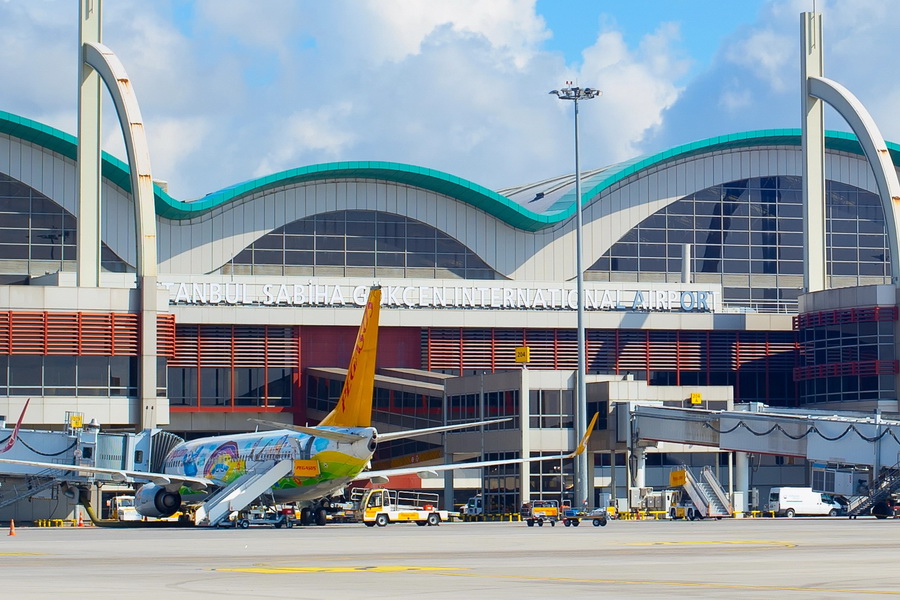
Tourism in the Thrace and Marmara Region means a compact transport infrastructure linking Europe and Asia. Istanbul is served by two international airports. Istanbul Airport (IST), located on the European side, is one of the busiest airports in the world, with flights to over 350 destinations, including many in the Marmara Region. Sabiha Gökçen Airport (SAW), on the Asian side, hosts about 54 airlines, including Pegasus Airlines and Turkish Airlines, offering domestic and international flights. Regional airports include Bursa Yenişehir, Tekirdağ Çorlu, Çanakkale, Balıkesir Kocaseyit, and Kocaeli Cengiz Topel, connecting to Ankara and other cities.
By Air
Main airports: Istanbul Airport (IST), Sabiha Gökçen Airport (SAW), Bursa Yenişehir Airport (YEI), Çanakkale Airport (CKZ), Tekirdağ-Çorlu Airport (TEQ), Kocaeli Cengiz Topel Airport (KCO), and Balıkesir Kocaseyit Airport (EDO).
Istanbul Airport and Sabiha Gökçen Airport are the region’s key airfields, with flights to over 350 cities worldwide. Other airports such as Bursa Yenişehir and Çanakkale provide regular domestic services, while Tekirdağ, Kocaeli, and Balıkesir support seasonal and regional air connections.
By Train
High-speed and regional trains operate between Istanbul and cities like Edirne, Lüleburgaz, and Eskişehir. The Marmaray tunnel under the Bosphorus allows continuous rail service between the European and Asian sides. Halkalı is the region’s international rail gateway to Sofia and Bucharest, especially in summer.
By Bus
Frequent internal bus services operate from Istanbul to all provincial capitals in the region. Travel times are short, and terminals are connected to local public transport. Key Marmara Region destinations include Edirne, Bursa, Balıkesir, Tekirdağ, and Çanakkale.
By Car
The region is connected by modern highways, including the O-5 and the Northern Marmara Motorway. Scenic routes include the Bosphorus coast, the Gallipoli Peninsula, and inland drives to Uludağ and Lake Uluabat.
By Sea
Istanbul's ports welcome numerous cruise ships, and yacht travel is also an option, as the marinas are typically modern and well-equipped to cater to this type of tourism. Tekirdağ, Gelibolu, Bandırma, and Yalova are all connected by ferries and Ro-Ro ships. These crossings are effective substitutes for driving on the highway. Both Bosphorus shores are served by Istanbul's ferry system.


